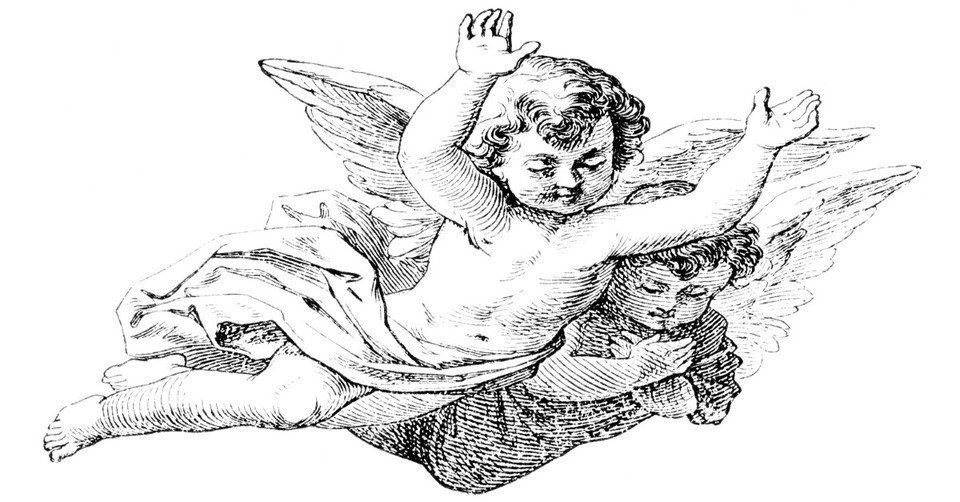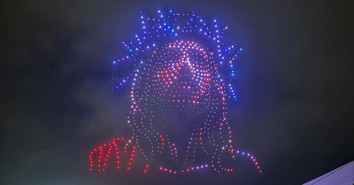What Does a Cherub Look Like?

Humanity has always marveled at the idea of an unseen spiritual realm full of beings classified as angels. Throughout the ages, artists have attempted to capture these heavenly creatures’ essence on canvas, through literature, and now in the modern age—through every possible digital medium. Of all the angels referenced in Scripture, the cherub (plural cherubim) appears the most. But the Biblical description of these creatures paints a far different picture than today’s caricatures in art and popular culture.
What is a Cherub in the Bible?
The Bible mentions three classifications of angels by name: seraphim, cherubim, and archangels. But scholars agree other types of angels may exist based on Biblical passages that allude to diverse angelic activity. Like everything that God creates, angels exist to reveal God’s glory, and each angel plays a distinctive role in that all-important mission.
God’s Word tells us that He created angels to worship, serve, protect, inform, minister, and execute judgment (Daniel 6:20-23, 2 Kings 6:13-17, Psalm 91:11, Acts 7:52, Luke 1:11-20, Matthew 1:20, Hebrews 1:14). The Cherub’s unique role in God’s overall plan unfolds in Scripture beginning in Genesis.
1. The Garden of Eden: After Adam and Eve sinned in the Garden of Eden, God drove them out of their lush habitat and into the hard labor that comes with choosing self-sufficiency over God-dependency. God then placed cherubim, armed with flaming swords, at the entrance of the garden to supernaturally guard the way to the tree of life (Genesis 3:24).
2. God’s Temporal Holy Places: God provided Israel with clear, detailed instructions for constructing and ornamentating the ark of the covenant and his temple. Because the aesthetics of these temporary dwelling places symbolized Israel’s heavenly home, God instructed Moses and Solomon to craft images of cherubim to adorn the mercy seat and the Holy of Holies.
“And make two cherubim out of hammered gold at the ends of the cover. Make one cherub on one end and the second cherub on the other; make the cherubim of one piece with the cover, at the two ends. The cherubim are to have their wings spread upward, overshadowing the cover with them. The cherubim are to face each other, looking toward the cover …There, above the cover between the two cherubim that are over the ark of the covenant law, I will meet with you and give you all my commands for the Israelites.” (Exodus 25:18-21)
“He placed the [carved] cherubim inside the innermost room of the temple, with their wings spread out. The wing of one cherub touched one wall, while the wing of the other touched the other wall, and their wings touched each other in the middle of the room. He overlaid the cherubim with gold.” (1 Kings 6:27-28)
3. Near the throne of God: In Ezekiel chapter one, God gives Ezekiel a supernatural glimpse into the Heavenly realm to prepare the young priest and prophet for ministry. In this vision, Ezekiel witnesses an ominous cloud of lightning and fire as it wafts toward him from the north. Four glowing beings appear within the cloud. The creatures have the form of a man, but their features are far from human.
By the time we reach Ezekiel 10, we find Ezekiel witnessing events happening in the throne room of God. The mysterious creatures he saw at the beginning of his vision are identified as cherubim. The cherubim appear to function as guardians of God’s throne and glory while they act as ministers of God’s judgment (Ezekiel 10:3-18).
4. Satan’s fall: It’s worth noting that before Satan rebelled against God, he was the highest ranking and most beautiful cherub ever created. (Ezekiel 28:12-15) After Satan’s betrayal, he and one-third of the angels lost their place in heaven. Those who fell with Satan are classified as fallen angels or demons.
5. In Revelation: “The description of Revelation 4:6-9 also seems to be representing cherubim. The cherubim follow the purpose of magnifying the righteousness and sovereignty of God. This is one of their main responsibilities throughout the Bible. In addition to glorifying God, they also serve as a visible reminder of the power and glory of God and His lasting presence with His people.” – “What is a Cherub? The Cherubim in the Bible”
What Do Cherubim Look Like in the Bible?
The prophet Ezekiel provides a detailed description of cherubim because he encounters four of these heavenly beings in his vision. According to Ezekiel’s report, each cherub has four faces—one human, one lion, one ox, and one eagle. Each has human hands, four wings, straight legs, and hooves that gleam like burnished bronze. (Ezekiel 1:4-14)
Beyond their unusual physical features, Ezekiel explains that cherubim radiate fire from their inner core that flashes between the creatures like lightning. With one set of wings, the cherubim cover their body; with the other set, they fly in formation at supernatural speed. The Spirit of God directs their movements, and a mysterious set of interlocking wheels accompany the angels wherever they go (Ezekiel 1:19-20).
While in flight, the cherub’s wings echo throughout heaven. Ezekiel likens the sound to the “voice of the Almighty when he speaks.” Ezekiel further explains that every inch of the cherubim’s body, including their backs, hands, and wings, are completely covered in eyes, as are the wheels beside them (Ezekiel 10:12).
Not only did God create these angels with a specific role in mind, but the cherubim’s very appearance symbolizes God’s power to use all creation to accomplish His purposes.
Scholars believe each of the cherub’s four faces symbolizes an attribute of God. The Lion speaks of God’s kingship and majesty. The Ox represents God’s strength, power, and His ability to carry His children’s burden. The eagle symbolizes God’s soaring insight and wisdom. The man represents how God brought salvation to the world—through His son Jesus.
Why do Cherubs in Classic Art Look Like Babies?
Though angels appear over 250 times in Scripture, not one Biblical account suggests that they bear child-like features. However, starting around the Renaissance, we find chubby, baby-faced creatures identified as cherubs in both religious and secular art.
In ancient times, these child-like imposter cherubs appeared in art under a different name—putto (plural putti). Taken from Greco-Roman classical mythos, the putto, an Italian word that means boy or child, is associated with Eros, the Greek god of love and sex, and with his counterpart Cupid, the Greek god of desire. The putto disappeared from art during the Middle Ages, but not for long.
At the beginning of the Renaissance, Italian sculptor Donatello revived the putto in art and invented an updated persona for the pagan creature. By infusing the appearance of the innocent-faced being with the identity of the Biblically defined cherub, Donatello successfully rebranded the putto as a cherub. Other religious and secular artists soon followed suit, and by the Baroque Era, artists almost always depicted cherubim as winged, fat infants or toddlers.
In 1513 Pope Julius II commissioned the Italian artist Rafael to paint The Sistine Madonna. At the bottom of the now famous oil painting, which depicts the Madonna holding the Christ child, Raphael painted two small putti—one with chin in hand and the other who stared wistfully into the heavens. The putti from Rafael’s painting are the same heavily marketed iconic “cherubs” most would recognize today.
Why Should Christians Learn about Cherubim?
Christians today have the privilege to discover some of the mysteries of the universe in Scripture’s pages. Yet often, we unwittingly glean ideals from a cultural view that couldn’t be further from the truth. C.S. Lewis puts it this way in The Screwtape Letters: “In Scripture the visitation of an angel is always alarming; it has to begin by saying “fear not.” The Victorian angel looks as if it were going to say, “There, there.”
Like every other angel in the Bible, cherubs are mighty beings of divine purpose. Believers should not mistakenly perceive them as cute and cuddly, nor should we underestimate the destructive nature of their impersonators—the putti. Thankfully, God has given us the means to discover the truth and combat the lies of the enemy, our own flawed understanding, and the tide of the wayward culture. And if the angels heed the voice of God’s word (Psalm 103:20), so should we.
Photo Credit: Getty Images/Zdenek Sasek
Originally published August 30, 2022.







